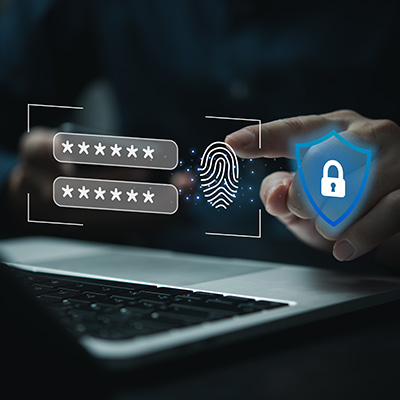AI is everywhere, helping us do everything from writing emails to analyzing data. It’s a powerful tool that can make work more efficient, but it also comes with a hidden risk you should be aware of: prompt hacking. This isn’t some half-baked science fiction. As more businesses rely on AI, understanding prompt hacking isn’t just a job for the IT department—it’s something everyone needs to know.
Healthcare technology is changing, and changing fast. Even beyond your typical concerns like data security and operational efficiency, healthcare IT faces unique challenges specific to the industry. Today, we want to cover some of the best practices that healthcare organizations should follow in regards to their IT. We’ll explore topics such as patient trust, legal compliance, and so much more.
A strong cybersecurity posture isn’t just about installing the latest software or ticking boxes on a compliance checklist. It’s about building a culture of security where every member of your team is actively engaged and invested in protecting your collective digital well-being… but how do you achieve that buy-in, beyond simply mandating policies? It starts with illuminating the “why” behind the “what.”
The second you hear “audit,” your brain likely goes into damage control mode. However, the purposes of an audit are not necessarily malicious. In fact, they can be remarkably beneficial for a number of reasons, including network security. A good audit can help your business stay secure from threats and vulnerabilities.
No matter what type of business you run or the services you provide to the community, chances are you must adhere to at least some compliance laws and regulatory requirements dictated by state or federal governments. Today, we want to make it abundantly clear that you must protect your business’ data to avoid inadvertently becoming subject to the massive fines associated with these laws.
In today’s interconnected world, an organization dedicated to fraud protection like the United States Federal Trade Commission is vital, especially when you consider how advanced digital technology has become and continues to grow. The FTC works to ensure consumer data stays protected by the businesses to which they entrust it. Let’s look at the Safeguards Rule and what your business should know about it.
You might think that adding additional security measures can only benefit your business, and this is true in most circumstances, save one: security exhaustion. If you don’t make it easy for your employees to adhere to your security policies, then you could inadvertently be making them perform slower than usual and your solutions could be getting in the way of their work.
You Can’t Flub Your Cybersecurity Awareness Cybersecurity is something that you can’t just ignore. It’s not going to ignore you—cybercriminals target the people who think they aren’t a target in the first place. Most businesses these days have at least some level of cybersecurity-based compliance regulations to meet and follow. Some can come from the state, some can come from the industry you are in, some apply based on the type of information you work with, and some can come directly from your business insurance provider. One of the biggest mistakes I see business owners and C-levels make is that they have overconfidence in their own cybersecurity. Most business owners are the least secure people I know (and I don’t mean that in an insulting way; CEOs and entrepreneurs, in general, are just wired to be efficient, and cybersecurity practices can feel like a big roadblock to efficiency.) Heck, I lose sleep at night when I suspect that the owner of a company we work with refuses to use multi-factor authentication, but I catch myself longing to turn that feature off because of the extra couple of seconds it adds to getting into an account every day. The point is, even as a leader, you can’t skimp on security. In fact, you should be the shining example of it in your organization. You Have to Know If You Are Compliant or Not Depending on the regulations your organization needs to meet, you likely have a laundry list of tasks to check off quarterly or yearly. For many organizations, a part of that might include a regular penetration test. A penetration test is a very specific set of tasks that involve an ethical hacker attempting to break into your business network using a variety of different ways. There are multiple phases that include reconnaissance, scanning for vulnerabilities and other weaknesses, getting in and attempting to steal, change or delete data, staying within the network undetected for a period of time, and looking for non-technical ways to exploit your organization, such as social engineering. It’s not a small feat, and it’s far from the typical quick network audit or port sniffer scan and things that a technician might do to solve a problem or investigate an issue. Don’t confuse the small stuff with a penetration test. I’ve talked to business owners in the past who were convinced their network was secure because a third-party ran some network audit tools that came back with devices that were out of date and fixed them. While that’s important to do, and something we do regularly, and maintain for our clients, it’s a long way from an actual penetration test. Let’s Make Sense of Your Cybersecurity, Together Protecting your business from modern-day threats and meeting regulatory requirements is a challenge if you try to do it by yourself. Let GeekBox IT be your trusted IT partner and keep your business operating smoothly. Get started today by calling (336) 790-1000.
To meet compliance requirements for technology an organization will need to understand the regulations they operate under. New entrepreneurs may find it startling when they realize that they have a lot more people/organizations to answer to than they thought. This week, we aren’t going to go through individual regulations, but how IT generally fits into compliance and how not staying up to date can cost your business dearly.
Regulations and compliance standards are in place for effectively every industry to uphold, many of which address cybersecurity in some way or another. Let’s talk for a moment about why compliance to these standards is of the utmost importance for your organization.
- 1
- 2










